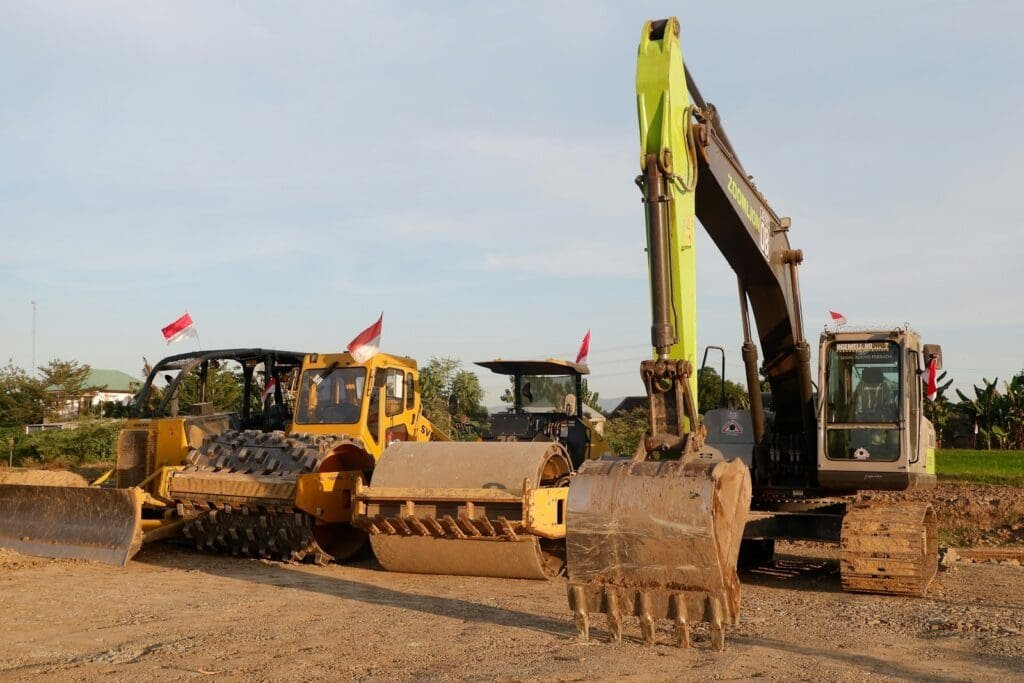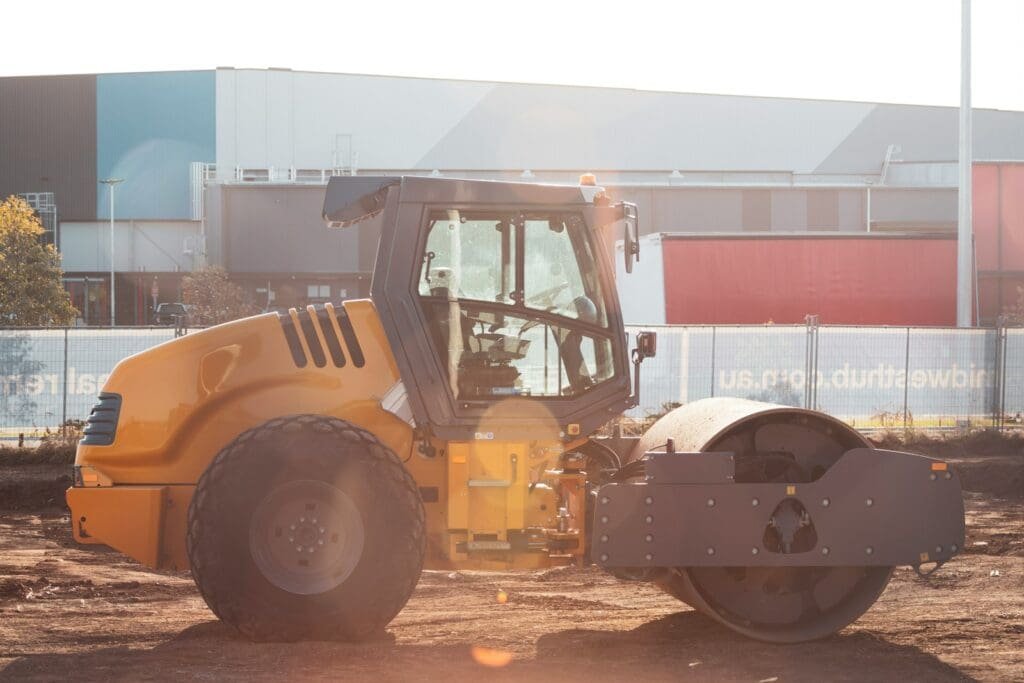What are the Benefits of Leveling?
Cracking construction lingo can sometimes feel like untangling a tough puzzle. Today, we directly take on one key construction concept that holds considerable impact on every building project: Leveling.
At a casual glance, leveling might seem like a simple idea. But what does it truly imply in the realm of construction?
Leveling, in construction lingo, points to the act of rendering a surface perfectly flat or even. It’s a vital step in building construction, guaranteeing that the foundations of structures lay on a uniform, stable surface.
What’s the scenario if a building’s base rests on an uneven surface?
Can you envision that?
The result would be a structurally unsound building. Leveling forms the groundwork for structural soundness, marking its pivotal role in construction.
Table of Contents
Can Leveling Be a DIY Project or Does It Require Professional Expertise?

What is leveling in construction?
Before diving into the DIY potential of leveling, let’s first understand what this task entails. Leveling in construction refers to the process of making a surface completely flat or horizontal.
Typically, this is done to prepare the ground for building structures, or it may even be performed as a repair work on already-built structures showing signs of unevenness.
DIY Leveling: Pros and Cons
Pros
- Cost-effective: Doing the leveling yourself can potentially save you considerable money that you would have otherwise spent on professionals.
- Satisfaction: There’s a certain gratification that comes from successfully completing a home improvement project by yourself.
- Flexibility: DIY projects allow you to work according to your own schedule.
Cons
- Quality Control: As a novice, you may lack the expertise and tools necessary for a high-quality job.
- Safety Concerns: Inexperience can lead to accidents and injuries.
- Higher Costs in the Long Run: Mistakes in leveling can lead to foundational problems in your structure and might require professional remediation later on, leading to higher costs.
Hiring Professionals: Pros and Cons
Pros
- Experience and Expertise: Professional levelers bring years of experience to the job, ensuring high-quality work.
- Safety: Professionals are trained and equipped to handle safety risks.
- Cost-effective in the Long Run: With a job done right the first time, you won’t need to spend on corrections later.
Cons
- Cost: Hiring professionals can be expensive.
- Scheduling: You may have to arrange your schedule to accommodate the professional’s availability.
Deciding whether to DIY or hire professionals for leveling depends on the specifics of your project, your personal experience with similar DIY projects, your budget, and your comfort level with taking on potential risks.
Always consider every aspect before making your decision. When in doubt, it’s safest to opt for professional expertise.
the Benefits of Professional Land Leveling in Construction

Professional land leveling is a key aspect of the construction process, providing a foundation for a solid structure. This process involves adjusting the terrain’s natural slope to a level condition to ease construction. The following sections break down the main benefits.
The Significance of Land Leveling
Understanding the perks associated with professional land leveling helps constructors make informed decisions. The primary advantages are economical, environmental, and functional.
1. Economical Benefits
Professional land leveling can significantly contribute to cost savings in the long term, despite the initial investment.
- Reduced Construction Costs: A level ground simplifies the building process, reduces construction time, and consequently lowers labor costs. It aids in optimal utilization of materials and limits wastage.
- Maintenance Savings: Buildings on level ground are less prone to structural issues such as cracking or settling, which can reduce future maintenance and repair costs.
2. Environmental Perks
Beyond the economic standpoint, land leveling also has worthwhile environmental benefits.
- Improved Water Management: A leveled ground ensures proper drainage that aids in preventing water pooling or logging, reducing the chance of flooding and soil erosion.
- Promotes Sustainability: The improvement of the land also aids in the sustainability of the construction project as it reduces the need for excessive use of materials and energy.
3. Functional Advantages
Professional land leveling also adds functionality to a property.
- Increases Usable Space: By leveling the land, the ground becomes more usable, granting builders more leeway in their design options, and allowing for varied architectural aesthetics.
- Enhances Property Value: A properly leveled property is often considered more valuable due to its aesthetic appeal and reduced risk of future structural problems.
Professional land leveling, while initially an investment, generates substantial benefits – economical, environmental, and functional – rendering it an indispensable part of the construction process.
Remember, a properly leveled land sets the course for a successful construction project.
Essential Tools for Proper Leveling in Construction
Construction work requires precise measurement and alignment, particularly when conducting tasks like pouring foundations, mounting frames, or tiling floors. Leveling is the mandatory process that contributes to these perfection-seeking tasks. Successfully navigating this process requires specific tools designed to ensure surface flatness, straightness, and leveling.
Types of Leveling Tools
There are several different types of leveling tools used in the construction industry. Here’s a rundown of the various types and what they’re generally used for:
- Spirit Level: Also known as a bubble level, this tool is typically used to measure the horizontal level, the vertical level, or a perfect 45-degree angle.
- Laser Level: A more modern and precise tool, a laser level projects a beam of light that represents a perfectly straight line, helpful for alignment in construction.
- Line Level: This simple tool is attached to a tight string to find level over a long distance.
- Optical Level: This tool incorporates telescopic sight to enhance visibility, accuracy and is commonly used for larger construction sites or in groundwork.
- Dot Laser Level: Projects a dot onto the surface being leveled, often used when requiring reference points.
- Rotary Laser Level: Emits a 360-degree laser line around a work area, perfect for indoor or outdoor use.
Necessary Accessories for Leveling Tools
In addition to these essential leveling tools, there are also necessary accessories that help in this process:
- Leveling Rods: These can extend up to 25 feet and are used with various tools, such as laser or optical levels.
- Tripods: Provides a stable base to help improve the accuracy and precision of leveling tools.
- Grade Rods: Great for determining differences in elevation, they provide additional accuracy when leveling.
How to Choose the Right Leveling Tools
Choosing the right leveling tools depends on the type of construction work you will be doing. For example, for general construction work, a spirit level, or a laser level may be sufficient. For larger buildings or groundwork, an optical level with a leveling rod and tripod might be necessary.
It’s always recommended to research brands before buying or renting your leveling tools to ensure you’re getting the right ones for your specific construction project.
Low-quality construction will never withstand the test of time. Hence, the necessity for proper leveling in all construction work becomes indispensable. With the right leveling tools, not only can you ensure a stronger, safer structure, but also save time and resources by getting it right the first time.
Leveling Out Our Article
In conclusion, we’ve found that leveling holds imperative significance in construction. For any structure to retain stability and longevity, a flat, stable surface gained through precise leveling is necessary; a factor overlooked at our own peril.
From our perspective, construction wouldn’t achieve its purpose without adequate leveling, underlining its status as a bedrock of the construction process.
The mastery of leveling tools, including leveling rods, spirit/bubble levels, and laser levels, is a vital skill for construction professionals striving for excellence.
As we now understand, these tools help ensure that the foundation of any structure is laid on an even and stable surface, paving the way for a robust and enduring structure.
In essence, accurate leveling is a non-negotiable prerequisite for well-grounded, stable constructions. So, every time you behold a beautifully erected structure, remember the unmistakable contribution of leveling. It’s a testament to the precision and skill of those who work relentlessly behind the scenes, working the industry magic known as construction.






